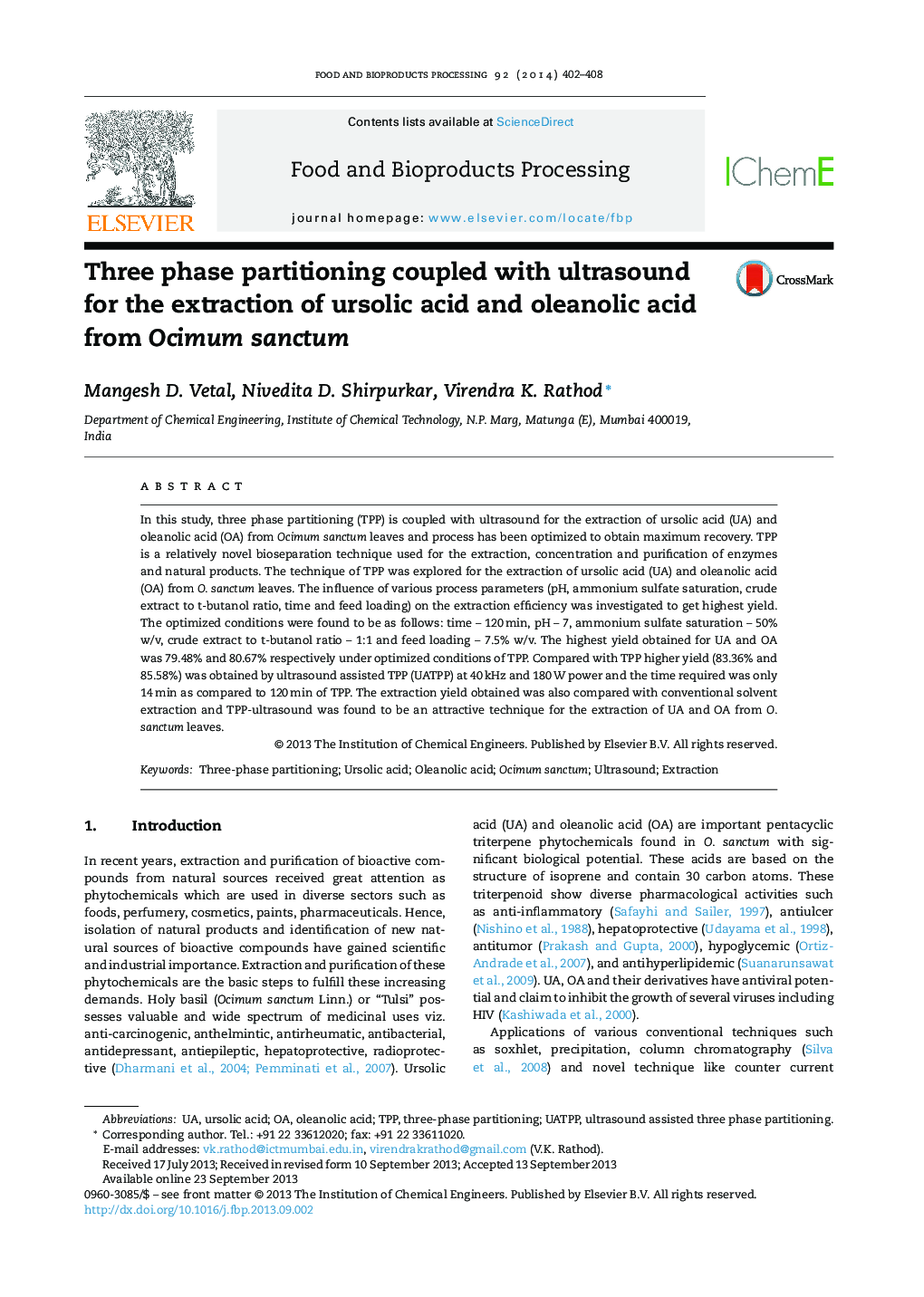| Article ID | Journal | Published Year | Pages | File Type |
|---|---|---|---|---|
| 18976 | Food and Bioproducts Processing | 2014 | 7 Pages |
•Three phase partitioning of ursolic and oleanolic acid from O. sanctum is proposed.•Three-phase partitioning (TPP) is coupled with ultrasound to intensify the process.•Effect of various process parameters on extraction yield has been studied.•Process has been optimized to get maximum extraction yield.•UATTP is compared with TPP and batch extraction.
In this study, three phase partitioning (TPP) is coupled with ultrasound for the extraction of ursolic acid (UA) and oleanolic acid (OA) from Ocimum sanctum leaves and process has been optimized to obtain maximum recovery. TPP is a relatively novel bioseparation technique used for the extraction, concentration and purification of enzymes and natural products. The technique of TPP was explored for the extraction of ursolic acid (UA) and oleanolic acid (OA) from O. sanctum leaves. The influence of various process parameters (pH, ammonium sulfate saturation, crude extract to t-butanol ratio, time and feed loading) on the extraction efficiency was investigated to get highest yield. The optimized conditions were found to be as follows: time – 120 min, pH – 7, ammonium sulfate saturation – 50% w/v, crude extract to t-butanol ratio – 1:1 and feed loading – 7.5% w/v. The highest yield obtained for UA and OA was 79.48% and 80.67% respectively under optimized conditions of TPP. Compared with TPP higher yield (83.36% and 85.58%) was obtained by ultrasound assisted TPP (UATPP) at 40 kHz and 180 W power and the time required was only 14 min as compared to 120 min of TPP. The extraction yield obtained was also compared with conventional solvent extraction and TPP-ultrasound was found to be an attractive technique for the extraction of UA and OA from O. sanctum leaves.
